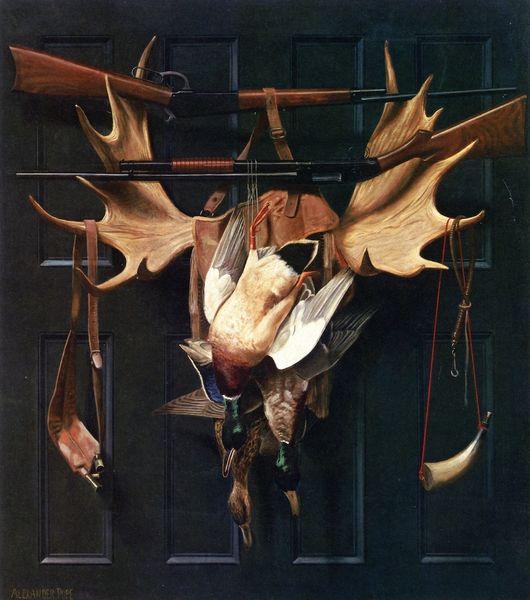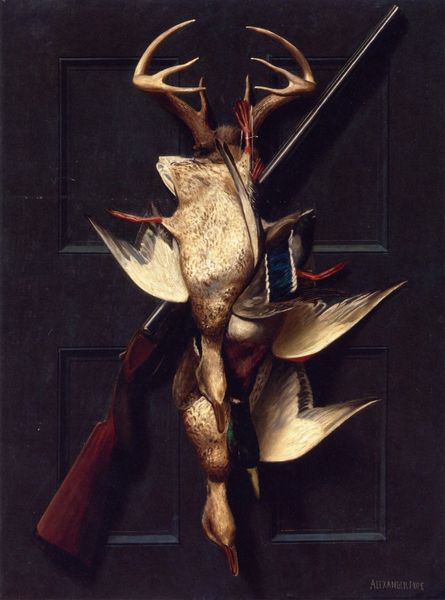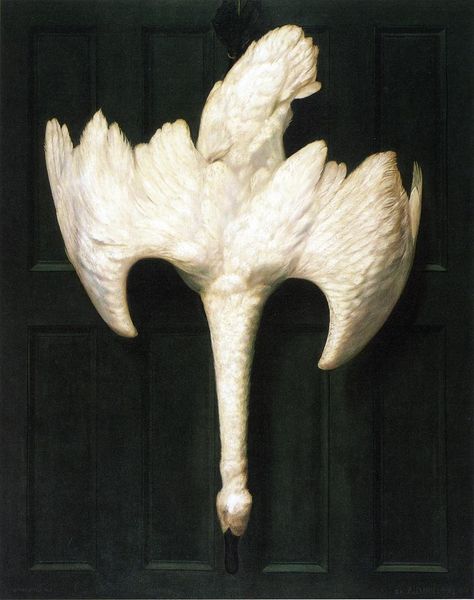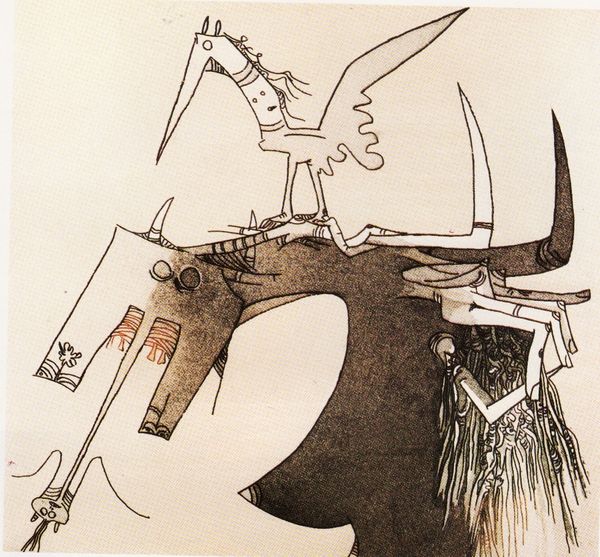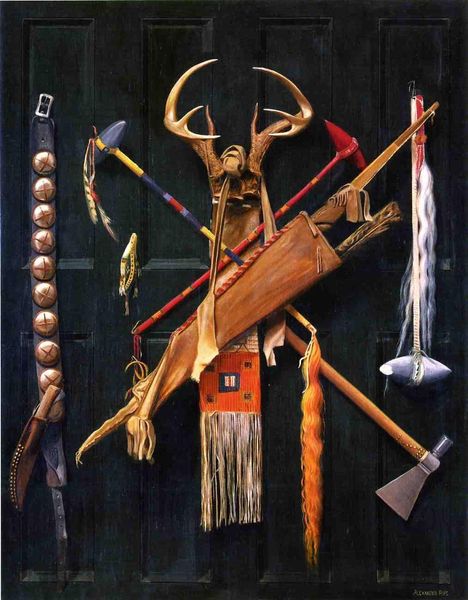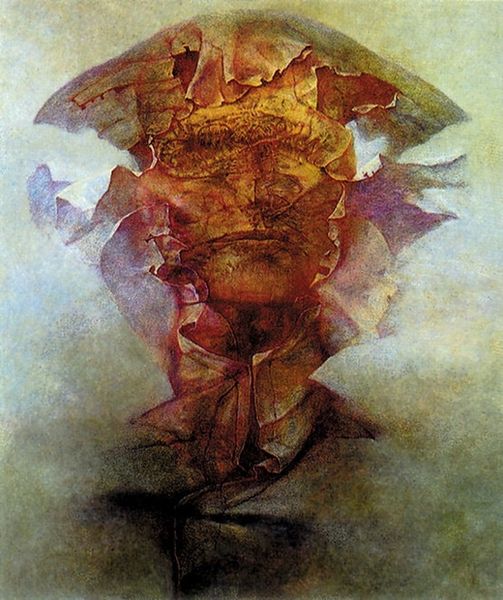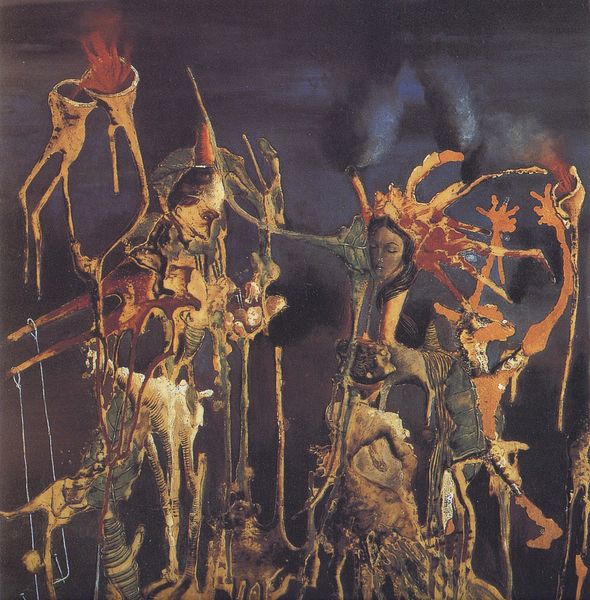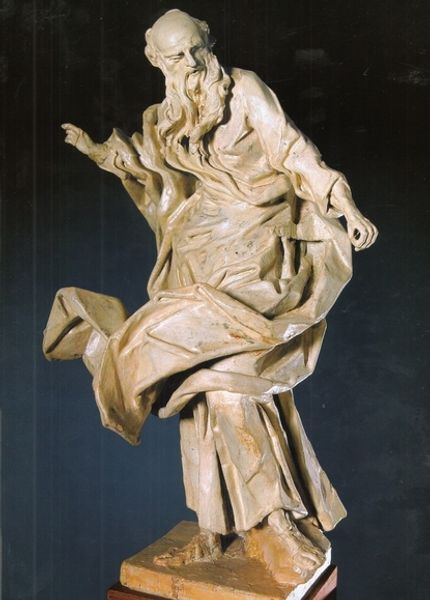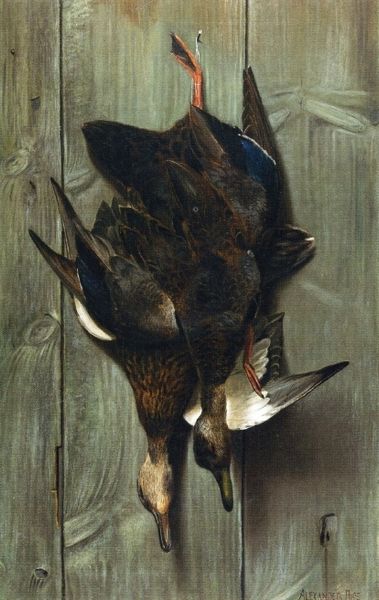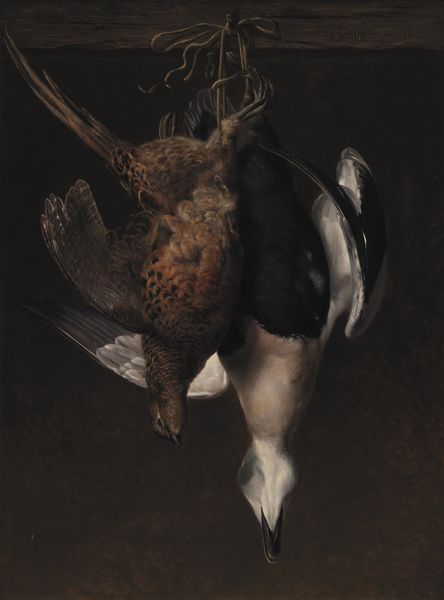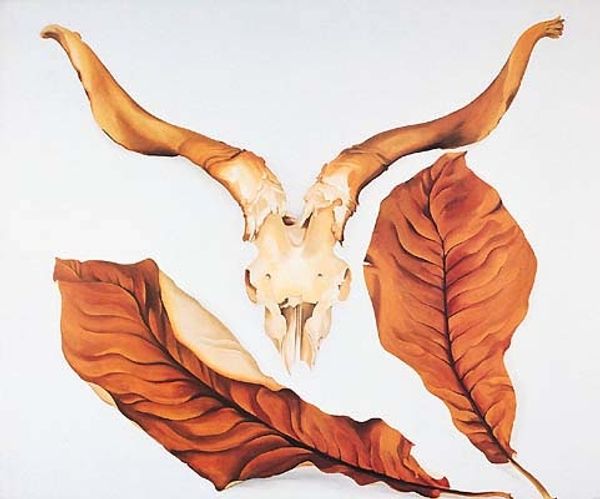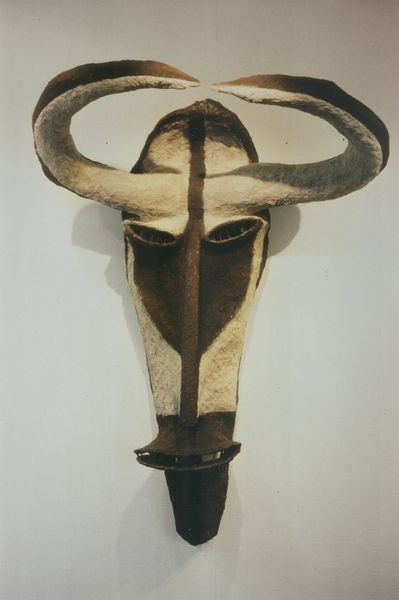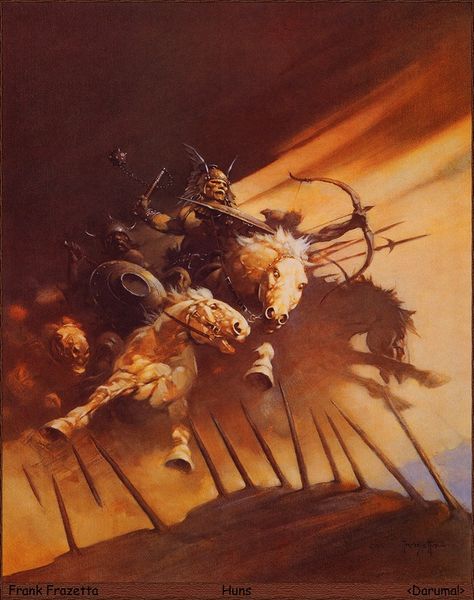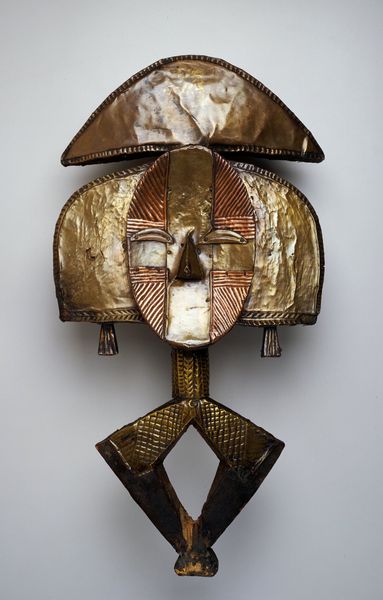
3d sculpting
building site documentary shot
sculpture
sculptural image
possibly oil pastel
derelict
sculpting
spray can art
3d art
chaotic composition
Copyright: Public domain
Curator: At first glance, this feels like a rather grim still life. Somber, almost…confrontational. Editor: Indeed. This is "After the Hunt," created around 1900 by Alexander Pope. What we see represented are hunting trophies, emblems of a successful expedition, now presented for viewing. Curator: It's meticulously rendered—look at the detail in the plumage of the birds, the polished sheen on the rifles. I sense an attempt to capture not just the appearance but the essence of each object, transforming tools and prey into cultural artifacts laden with significance. Editor: And consider what that significance might be. In its historical context, this work exists in a landscape increasingly dominated by industrialization and, simultaneously, an idealization of nature, the hunt taking on a symbolic weight, reaffirming a connection to something considered "primitive". We can't detach such displays from a violent act performed on other beings in pursuit of sport and masculine prowess. Curator: True, but violence and sacrifice have held symbolic weight for centuries. Look at how the arrangement, especially the placement of the antlers, creates almost an altar-like structure. The objects are displayed with deliberate care, hinting at the ritualistic nature of the hunt itself. There's a reverence, however problematic, woven into the representation. Editor: I'd counter that any perceived "reverence" serves to further legitimize a hierarchical relationship—humans positioned above the natural world. These weren't offerings but conquests. Also, I would venture to question this painting's relation to taxidermy displays, prevalent at this time, where the subjugation of animals was equated with scientific or cultural advancement. Curator: It's a dichotomy, I agree. But symbols don't exist in a vacuum; their meanings are mutable. The symbolism is in tension between the natural world and culture. Even now, viewing it through a contemporary lens allows for the opportunity to dissect the ethical quandaries it brings to the surface. Editor: Agreed, it acts as a kind of historical mirror, challenging us to consider how ideas around dominion, tradition, and conservation have transformed and endure. I think, perhaps, we should linger on this image as an uncomfortable memento mori for the age of extractive capitalism. Curator: I will certainly mull on your perspective and I believe it helps in grasping this complicated and controversial portrayal in modern light. Editor: And your consideration of its visual symbology opens paths towards richer understanding of historical sentiments and worldviews.
Comments
No comments
Be the first to comment and join the conversation on the ultimate creative platform.
